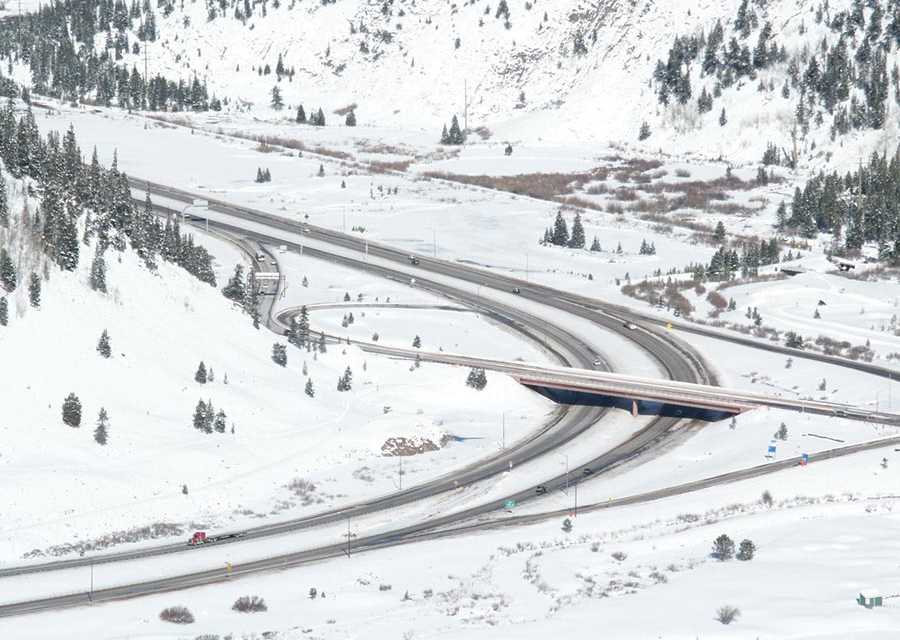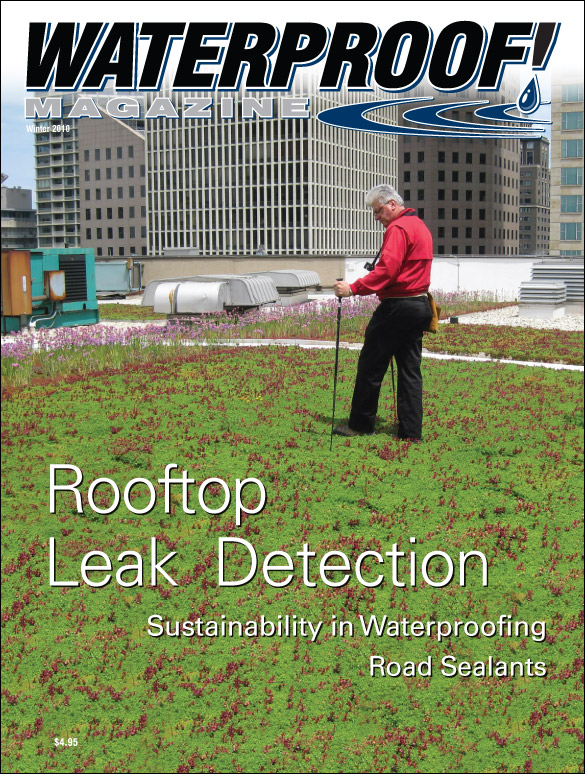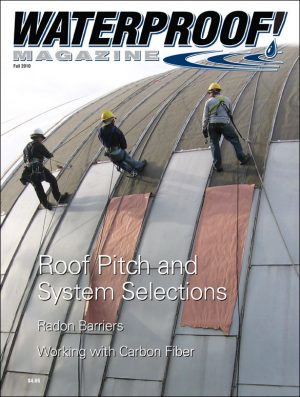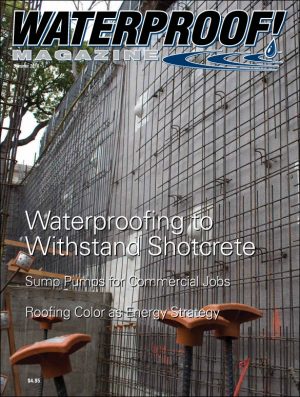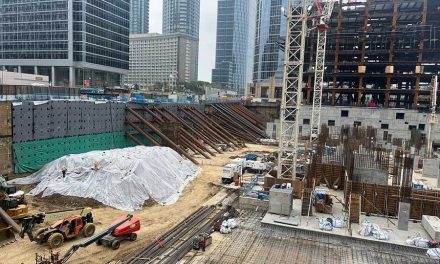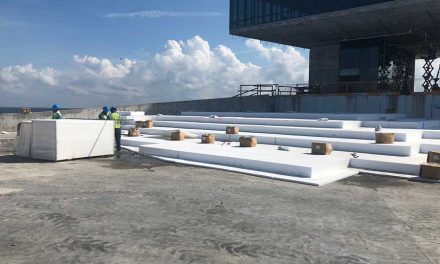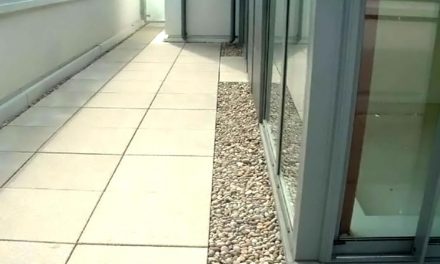Bridges and elevated sections of highway have to perform in extreme conditions. Interstate 70 west of Denver provides an extreme example.
The portion of I-70 between Denver and the Utah line is considered an engineering marvel. After reaching the Eisenhower Tunnel—the highest point along the Interstate Highway system with an elevation of 11,158 ft.—the road descends through narrow Glenwood Canyon. The canyon is so narrow that at times the east and westbound lanes are stacked on top of each other, and speed limits are reduced to 50 mph due to the sharp corners. It’s remote, too. When the road is closed due to weather or an accident, there is no alternate route.
Temperatures fluctuate from near 100 degrees in the summer to below zero in winter, and the joints are subjected to heavy snows, corrosive road salts, and other chemicals.
Handling high traffic loads in these weather conditions means that the expansion joints and sealants used need to allow for structure fluctuations, while being sealed to protect structural integrity.
Most bridges built after the late 1960s use preformed rubber compression gaskets to seal joints. In harsh conditions, they typically begin to fail after only a few years. This leads to water leaks and accumulation of de-icing salts and debris, which can rust or corrode the substructure components, columns and piers of a bridge or elevated roadway.
Replacing these seals can be an expensive and laborious process, especially when the likelihood that the new seals require another replacement in a few short years is considered.
The Colorado Department of Transportation (CDOT) was looking for a better solution when it needed to reseal the joints along I-70 in Glenwood Canyon. It wanted a cost-effective, easy installation that would prevent water from entering the joint and not require long road closure times.
CDOT found a intriguing solution in silicone. The X.J.S.® Expansion Joint System, made by Silicone Specialties, Inc. (SSI), uses a silicone joint sealant made by Dow Corning to create a tough, wear-resistant surface with rapid-curing, high movement materials.
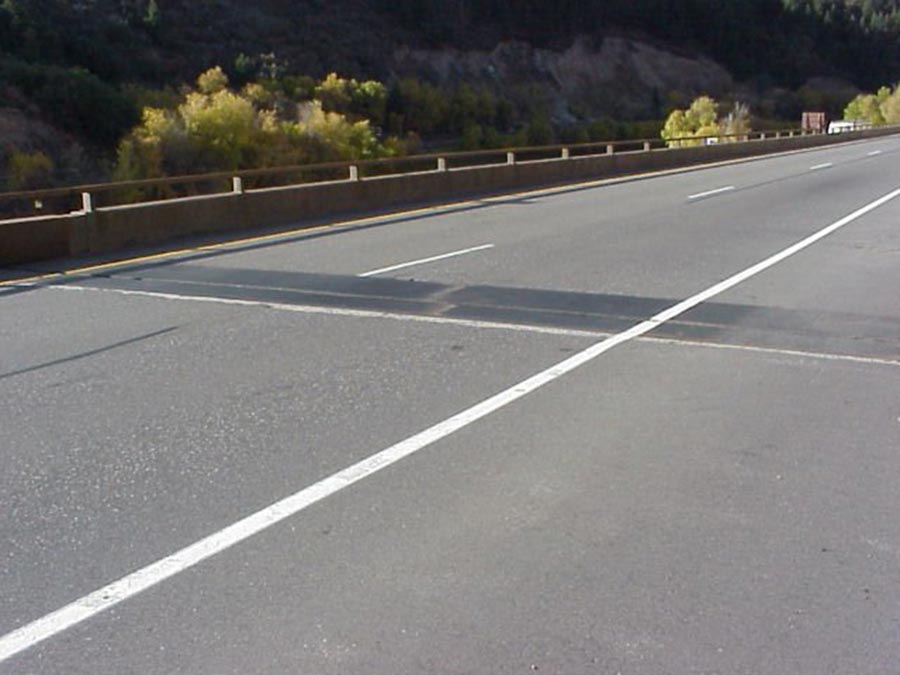
They decided to give the product a try, and hired G.A. Western Construction to do the install.
“There was a rubber seal in place when we began the project,” said Joe Kelly of G.A. Western. “We removed the rubber, replaced it with an epoxy and then applied the X.J.S. system to the two-inch expansion joint. So far the project has done an excellent job of solving CDOT’s perennial problem with faulty two-inch joints.”
Delmon French, of the Colorado Department of Transportation says, “The X.J.S. system has provided a relatively simple solution for joint replacement and repair.”
“We worked closely with CDOT’s bridge engineers to find ways to complete needed repairs with minimal impact on the traveling public,” noted Dale Baker of SSI Highway Products Sales. “The X.J.S. Joint System gave CDOT a flexible solution in terms of joint configuration and traffic accommodation when repairing bridge expansion joints in Glenwood Canyon.”
Road closures were a particular concern, because I-70 in Glenwood Canyon is the only road available; there are no alternate routes.
So far, the system seems to be successful. “Some of the joints are five years old and as of January 2008 have performed well in the harsh conditions experienced on this stretch of I-70,” reports French. n
Winter 2010 Back Issue
$4.95
Sustainability: Strategies to combine Effectiveness and Eco-friendliness
Non-Destructive Leak Detection
High Performance Highway Sealants
AVAILABLE AS DIGITAL DOWNLOAD ONLY
Description
Description
Sustainability: Strategies to combine Effectiveness and Eco-friendliness
Green is big business right now. New techniques and products that are both sustainable and effective can improve the environment and your bottom line.
Non-Destructive Leak Detection
Traditionally, testing commercial roofs for leaks can be time-consuming, messy, and actually damage the roof membrane. But new technology can end that, saving time, money and equipment, and locating even the smallest breach in the membrane.
High Performance Highway Sealants
Sealants used on bridges and elevated sections of highway have to perform in extreme conditions. Interstate 70 west of Denver provides an extreme example.
Additional Info
Additional information
| Magazine Format | Digital Download Magazine, Print Mailed Magazine |
|---|

